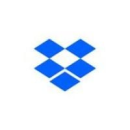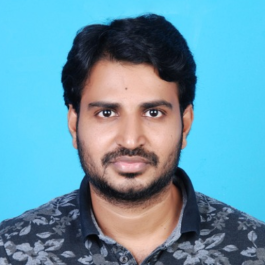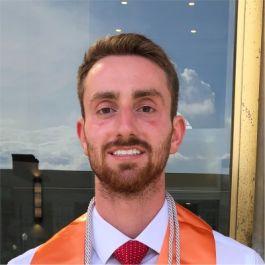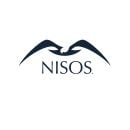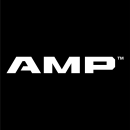If “the best way to predict the future is to invent it,” as tech pioneer Alan Kay once said, then these 11 engineering teams across the country may be the tech industry’s crystal ball.
2025 is slated to be an exciting year for each of them, filled with robust product roadmaps outlining the inception of innovative and impactful new products and features. For instance, at IMC Trading, Data Engineer Zack Kobza and his teammates will be expanding the firm’s research capabilities this year in an effort to “empower research teams to experiment freely, iterate rapidly and run workloads with confidence.”
Kobza said that, as his team strengthens the firm’s competitive edge, they’ll have the opportunity to grow in the process as they learn how to navigate stakeholders and more. All in all, it offers an “exciting chance to make a broader impact.”
Meanwhile, at Garner Health, Engineering Manager Ted Dziuba’s team is building a new feature that will allow the company’s members to view all of their medical claims in the company’s app. According to him, this project has been a top request from members, making it a critical next step in the company’s innovation journey.
As is the case with any engineering project, Dziuba and peers will certainly encounter challenges along the way — but that’s OK. He said that he knows it’s a hard problem to solve, but by working closely with product managers, his team will be able to deliver on their promise and help members understand their medical claims more clearly in the process.
For engineering teams at IMC Trading, Garner Health and nine other companies, 2025 will be an exciting one filled with innovation, impact — and growth. Read on to learn more about what engineers at each company will be working on this year and how they plan to tackle these projects.
Dropbox provides cloud-based solutions for file storage, sharing and collaboration, leveraging AI to transform knowledge work for over 700 million users.
What project are you most excited to work on in 2025, and what is particularly compelling about this work for you?
In 2025, I am most excited to work on the new AI feature for Dropbox Dash. This project is particularly compelling because it presents an opportunity to integrate some of the most cutting-edge AI capabilities into real-world applications, directly impacting how users interact with their data. The ability to merge state-of-the-art AI advancements with Dropbox Dash is both exciting and challenging.
“This project is particularly compelling because it presents an opportunity to integrate some of the most cutting-edge AI capabilities into real-world applications, directly impacting how users interact with their data.”
What does the roadmap for this project look like? Who will you collaborate with, and what challenges will you need to overcome in the process?
The roadmap for this project involves several key phases. Initially, the focus will be on defining the AI feature’s scope and identifying the most relevant use cases for Dropbox Dash users. Next, we will focus on prototyping, iterating and testing the AI capabilities to ensure they integrate smoothly with the platform. As we move into the implementation phase, I’ll collaborate closely with engineers, product managers and UX/UI designers from different teams to ensure the feature aligns with both technical requirements and user needs.
One of the key challenges I anticipate is ensuring that the AI remains simple and intuitive while leveraging its full potential. I plan to overcome this by maintaining a strong focus on user testing and feedback to iterate quickly and fine-tune the feature. Additionally, addressing potential scalability issues early will be critical to smooth deployment.
What in your past projects, education or work history best prepares you to tackle this project? What do you hope to learn from this work to apply in the future?
My background in machine learning research during my PhD, combined with my experience as a machine learning engineer at Dropbox during my three internships, has uniquely prepared me for this project. Throughout my internships, I worked on real-world ML applications, honing my ability to build, optimize and scale machine learning models effectively. These experiences, along with my deep understanding of AI and its practical applications, have equipped me with the technical skills needed to integrate AI into Dropbox Dash. I also gained valuable experience in cross-functional collaboration, which will be crucial for working efficiently with other teams. Through this project, I hope to deepen my expertise in deploying AI at scale and learn how to evaluate and fine-tune AI solutions for enterprise use cases.
IMC Trading is a proprietary trading firm that ensures 24/7 liquidity across major exchanges worldwide, operating trading hubs in the United States, Europe, Asia-Pacific and India.
What project are you most excited to work on in 2025, and what is particularly compelling about this work for you?
The project I am most excited about in 2025 is expanding our research capabilities within IMC on a global scale. This initiative will build a cutting-edge infrastructure to empower research teams to experiment freely, iterate rapidly and run workloads with confidence. By pushing the boundaries of technology, we aim to develop predictive models to solidify our competitive edge.
“This initiative will build a cutting-edge infrastructure to empower research teams to experiment freely, iterate rapidly and run workloads with confidence.”
What excites me most is how this project challenges me to grow. Coming from a developer background, I’m eager to explore the complexities of data center infrastructure and enhance my business skills by working with vendors, navigating contracts and contributing to cost estimations — areas where I have limited experience. Additionally, I’m excited about collaborating with new colleagues. This project is a unique opportunity to contribute to transformative work while advancing my expertise and strengthening IMC’s future globally.
What does the roadmap for this project look like? Who will you collaborate with, and what challenges will you need to overcome in the process?
This project’s roadmap focuses on collaboration across teams to meet researchers’ immediate needs while anticipating future demands. Our goal is to ensure infrastructure never limits analysis, allowing researchers to focus on innovation.
Key milestones include expanding our current compute resources to support both existing use cases and new initiatives, collaborating with stakeholders to create a flexible research strategy that adapts to shifting priorities, developing a cost model to better understand usage patterns, and exploring emerging technologies to boost productivity across both hardware and software. We also aim to simplify how researchers interact with the infrastructure, ensuring seamless access to key features that enhance performance. Additionally, establishing a robust global operational support model will ensure reliability and scalability as the system evolves.
Challenges like tech limitations, coordination and costs are inevitable, but we are well-positioned to overcome them. By fostering continuous learning, onboarding skilled talent, making data-driven decisions and maintaining open communication, we can build an infrastructure that drives global innovation.
What in your past projects, education or work history best prepares you to tackle this project? What do you hope to learn from this work to apply in the future?
At IMC, I’ve had the privilege of working with talented colleagues on both technical and non-technical challenges. My time on the data engineering team built a strong foundation in managing data at scale and supporting analysis tools that turn raw data into insights. More recently, working with research teams deepened my understanding of their workflows. I’ve gained hands-on experience with machine learning models and pipelines, tackling bottlenecks and improving runtimes to enhance overall workflow efficiencies.
These experiences have strengthened my technical expertise and problem-solving skills while teaching me to leverage others’ knowledge. They’ve prepared me to tackle the complexities of expanding research infrastructure and shape my career. While I’ve gained insights into data center infrastructure, research use cases and project management, this project offers an exciting chance to make a broader impact. A key area I want to grow in is strategic thinking — evaluating challenges from a high-level perspective and driving meaningful change. I also hope to share knowledge, fostering a culture of collaboration and continuous growth within the organization.
Coupa Software’s platform is designed to help organizations more effectively manage direct and indirect spend by harnessing spend data from global buyers and suppliers.
What project are you most excited to work on in 2025, and what is particularly compelling about this work for you?
I am a lead software engineer in the services procurement product area. We are on a journey to build the best procurement services offering, advanced statements of work and worker capabilities. I am super excited to build and deliver a strategic set of capabilities for future releases as a part of the SOW solutions to the market.
“We are on a journey to build the best procurement services offering, advanced statements of work and worker capabilities.”
What does the roadmap for this project look like? Who will you collaborate with, and what challenges will you need to overcome in the process?
We are targeting to have robust support for complex SOW capabilities in the next 12 months in our core services procurement offering. I will collaborate with our product managers, developers, quality engineers and architecture team on design and development. As we provide advanced capabilities with AI integration, I want to ensure we deliver high-quality features on schedule and that the deliverables go smoothly by removing any roadblocks.
What in your past projects, education or work history best prepares you to tackle this project? What do you hope to learn from this work to apply in the future?
I have the ability to quickly learn new technologies and products while working on the services procurement team. Additionally, our experience in integrating the CCW power app as a core platform and working in a team with extensive domain experience in this area has prepared us well to achieve the targets and enable our customers on this new journey. Through this project, I hope to enhance my skills in technology integration further and gain valuable insights that I can apply to future projects.
Invenergy develops and operates sustainable energy solutions related to wind, solar, natural gas and advanced energy storage.
What project are you most excited to work on in 2025, and what is particularly compelling about this work for you?
Without a doubt, it’s Invenergy’s Grain Belt Express transmission project. Not only does this project have a number of interesting technical challenges within the design of the HVDC converter stations themselves but the complexity and magnitude of the project make the interfaces just as interesting. This means that our HVDC engineering team gets the opportunity to explore and support many different areas, including overhead line design, interconnection studies and commercial and regulatory aspects.
“This means that our HVDC engineering team gets the opportunity to explore and support many different areas, including overhead line design, interconnection studies and commercial and regulatory aspects.”
What does the roadmap for this project look like? Who will you collaborate with, and what challenges will you need to overcome in the process?
The team working on this project makes it truly special. Internally, we have a passionate group of individuals working together to solve new and exciting challenges. Externally, we work with experienced equipment manufacturers, construction partners and owners’ engineering firms to help oversee the design. We’ve faced a number of significant challenges in the past — and will face many more, I’m sure — but getting to work through them with the team that we have on this project is a blast.
What in your past projects, education or work history best prepares you to tackle this project? What do you hope to learn from this work to apply in the future?
In this role, it really feels like we get to use our engineering degrees every single day. In addition to education, the transmission line design and construction experience I received in my prior role at Invenergy has been valuable. While a converter station certainly looks different from a transmission line, many of the principles and skills learned on transmission lines remain relevant. This year, I am looking forward to continuing to learn more about the power system studies aspects of these projects.
Garner Health offers a benefit program that enables employees to find the best doctors in their communities as well as a provider recommendation platform that serves referrals based on provider performance and directory data.
What project are you most excited to work on in 2025, and what is particularly compelling about this work for you?
We’re working on a project to show our members a full view of their medical claims in our app, both those that are approved for payment and those that aren’t. It’s one of the top-requested features from our members, and I’ve definitely felt the need for it myself as a Garner member.
“We’re working on a project to show our members a full view of their medical claims in our app, both those that are approved for payment and those that aren’t.”
What does the roadmap for this project look like? Who will you collaborate with, and what challenges will you need to overcome in the process?
This is a multi-quarter project that’s going to span a couple of different teams, but the real challenge is going to come from the medical claims data. When you interact with the American medical system, it generates a digital trail that loosely approximates what happened in reality. I say it “loosely approximates reality” because the purpose of a medical claim is to determine the flow of money that happens after the medical service, and piecing together the story of that visit isn’t always straightforward.
For example, let’s say you visit your doctor for a checkup, and they prescribe you a blood pressure medication. Their office sends that script to your pharmacy, which will fill it and bill your insurance. Your life gets busy, and you forget to pick up your medication, so the pharmacy re-stocks it. From your perspective, nothing really happened beyond that initial visit, but there’s a flurry of claims activity behind the scenes: claims, adjustments and reversals. Representing all that activity in a way that makes sense to the patient is a hard problem to solve. We’re going to spend a lot of time with our product managers to figure this out.
What in your past projects, education or work history best prepares you to tackle this project? What do you hope to learn from this work to apply in the future?
My background is in fintech and e-commerce, where the digital paper trails are equally as complex. I once worked on a project in e-commerce where we crawled the web for product data but needed to preserve data provenance to prove to regulators that we weren’t violating European Union copyright laws: very much a case of reality from data that loosely approximates it.
Mostly, I want to learn more about how normal people understand medical claims and how to help them understand it better. It’s an opaque industry that obfuscates a lot of information in jargon, but at the end of the day, there are only two questions anyone cares about: “How much does this cost?” and “Who pays for it?” I hope we can meaningfully teach our members how to navigate both of these questions and make it easy for them to get answers.
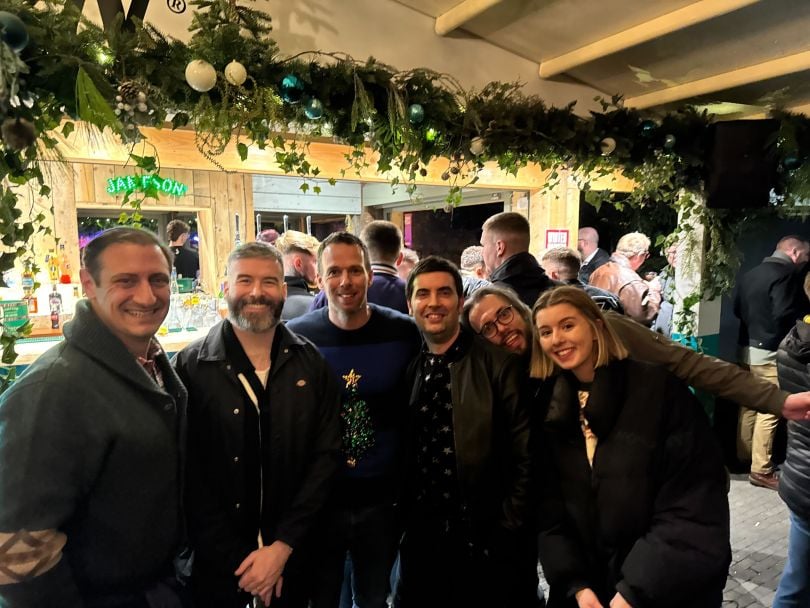
Nisos provides organizations with expert consulting services meant to reduce their digital risks. Its capabilities cover open-source threat intelligence for security, intelligence, legal and trust and safety teams. Its services include risk assessments, deep digital investigations and monitoring to help clients understand the threats to their business so they can protect their organization and people.
What project are you most excited to work on in 2025, and what is particularly compelling about this work for you?
As Nisos’ product strategy evolves coming into 2025, so too will its software offerings. As a result, the Belfast engineering team has started greenfield development of an exciting, new client-facing application. Given Nisos’ mission is to protect people and organizations from harm, working on a technology that empowers clients to keep their teams and businesses safe is incredibly rewarding. It’s also exciting and somewhat rare to be a part of an initial, holistic system design. From using the latest tools and programs and choosing the appropriate frameworks, libraries and technologies to construct our stack to architecting, scoping and implementation, it all provides really great learning opportunities for the entire team.
“Given Nisos’ mission is to protect people and organizations from harm, working on a technology that empowers clients to keep their teams and businesses safe is incredibly rewarding.”
AI is making waves in every industry, and the novel way in which our new system integrates it is particularly compelling for me. Working smarter, not harder, has never been more applicable in software development, and AI is what’s currently driving home that sentiment.
What does the roadmap for this project look like? Who will you collaborate with, and what challenges will you need to overcome in the process?
Like most projects, ours is split into distinct phases, each with its own deliverable feature sets, and our amazing engineering team works through liminal milestones in bi-weekly sprints until all phases are complete. Nisos has always been client-driven, and so they’re our primary touchpoint. Internally, the collaboration extends right across the board: engineering, QA and DevOps; product and design; analysts and vendors; HR and legal; sales and marketing; and all the way to our executive leadership team. The breadth of collaboration brings with it many cross-organizational meetings, and so ensuring efficient meeting schedules, being mindful of others’ time, and, in general, a healthy balance of pragmatism will be key to meeting project deliverables.
What in your past projects, education or work history best prepares you to tackle this project? What do you hope to learn from this work to apply in the future?
During my career, I’ve worked for startups and Fortune 500s alike and have had the pleasure of sharing insights and working with some very talented people on all manner of different domain-specific internal and client-facing applications. Regardless of the environment, I always come back to the same four pillars of what I deem critical to software development: scalability, robustness, security and internationalization. Keeping these in mind during each phase of development will provide us with a strong foundation, ease of maintainability and continued extensibility as the new project moves forward. Our experience of building an important, cutting-edge technology from the ground up as well as the teamwork and lessons learned will serve me and my teams at Nisos and in our future careers.
MVF is an integrated media and marketing services firm specializing in various disciplines, such as lead generation and website advertising.
What project are you most excited to work on in 2025, and what is particularly compelling about this work for you?
The project I’m most excited about is AI-driven product recommendations. What makes it so compelling is that it taps into several areas I’m very interested in as a technologist. It combines data analysis and machine learning on large datasets with intuitive front-end design. The project delivers personalized product recommendations based on historical customer data and past purchasing patterns, providing MVF telemarketers with actionable insights. Ultimately, it helps match the best-fit products with our customers’ needs.
“The project delivers personalized product recommendations based on historical customer data and past purchasing patterns, providing MVF telemarketers with actionable insights.”
What does the roadmap for this project look like? Who will you collaborate with, and what challenges will you need to overcome in the process?
The roadmap begins with a discovery phase, where we’ll analyze multi-channel customer interaction data to identify ways to train AI/ML models for extracting meaningful insights. From a UI perspective, we need to design ways to make our product recommendations both intuitive and engaging for our internal and external users.
Achieving this will require close collaboration between back-end, front-end and data engineering teams, as well as product and telemarketing teams. The main challenge will be ensuring smooth coordination and alignment across these teams to meet our delivery timelines. However, these challenges can be addressed through clear planning, well-defined roles and responsibilities and iterative functionality releases for stakeholder review and feedback.
What in your past projects, education or work history best prepares you to tackle this project? What do you hope to learn from this work to apply in the future?
My background leading data analysis, machine learning and front-end design teams gives me the confidence to tackle this project. I have previously worked with large customer datasets, using machine learning algorithms to uncover insights that improve user engagement and click metrics. I’ve implemented a recommendation engine for real estate products, which gave me hands-on experience in both the technical and UX aspects of a similar project.
My leadership experience in cross-functional teams allows me to collaborate across business, engineering, product and marketing teams. I’ve managed projects that required alignment between back-end and front-end development, ensuring smooth communication and efficient timelines, skills that will be crucial for this project’s success. I hope to improve my knowledge of applying AI/ML to real-world business problems and further enhance my ability to design intuitive user interfaces that drive user engagement.
Smartcat’s platform enables global organizations to translate content into any language and create new content by tapping into a multilingual enterprise library.
What project are you most excited to work on in 2025, and what is particularly compelling about this work for you?
I’m excited about our new full-document translation engine, which combines cutting-edge AI with user data like glossaries and translation memories. The biggest challenge is making it both flexible and adaptable; we provide a fast, high-quality pipeline for users who want a straightforward solution while also enabling detailed configurations for those with specific terminology or style requirements. This engine preserves document structure, so the original format stays intact. Under the hood, we integrate multiple large language models, each tested for different language pairs and which switch automatically if one model struggles. We’re constantly evaluating new AI providers to keep translations accurate and up to date.
“I’m excited about our new full-document translation engine, which combines cutting-edge AI with user data like glossaries and translation memories.”
I’m especially inspired by the engineering challenges involved. Our architecture needs to let users plug in custom prompts and update glossaries and translation memories without disrupting the pipeline. We use a modular design, so different components can be replaced or improved independently. The best part for me is working with advanced technologies. We’re bridging the gap between powerful AI tools and user needs, which is always an exciting challenge.
What does the roadmap for this project look like? Who will you collaborate with, and what challenges will you need to overcome in the process?
We have four main phases for this project. First, we’ll build the core pipeline for full-document translation, focusing on how we handle content structures. Next, we’ll integrate multiple LLMs so the system can automatically choose the best model for each language pair. After that, we’ll add user data to the translation pipeline, making full use of glossaries, translation memories and custom prompts. Finally, we’ll integrate the new engine with the rest of our product. We’ll work closely with product managers from different development tracks to prioritize cross-functional, multi-team features, data scientists to evaluate and select the best models and QA engineers to ensure reliability at scale.
Major hurdles include managing complex document structures, achieving high performance with large files and balancing system defaults with user-defined settings. We’re using a modular architecture that lets us swap out components without downtime. Combined with thorough benchmarking and stress testing, this approach will help us catch issues early and keep the pipeline robust and adaptable.
What in your past projects, education or work history best prepares you to tackle this project? What do you hope to learn from this work to apply in the future?
I’ve previously led projects where we integrated various third-party APIs into a single translation workflow, which gave me a deep understanding of building modular pipelines and handling diverse data formats. In my past role, I also focused on optimizing AI models for specific use cases, which taught me how to balance performance with accuracy — skills that are crucial for large-scale translation. I’m especially interested in refining how we merge user-generated data, like glossaries and translation memories, with LLM-based solutions. I believe the insights from this project about scaling AI across different domains and maintaining user-focused customization will be invaluable for any future efforts in natural language processing and intelligent automation. Essentially, I want to take these lessons and apply them to even more complex AI-driven products, ensuring they remain both powerful and user-friendly.
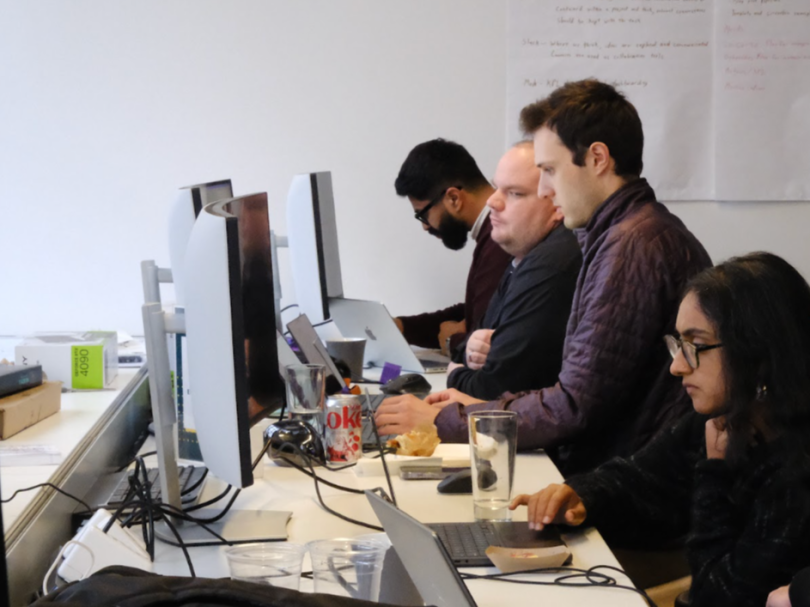
RunPod’s cloud infrastructure enables teams to train, fine-tune and deploy AI models.
What project are you most excited to work on in 2025? What is particularly compelling about this work for you?
Right now, I am focused on a novel project at RunPod called MultiNode. With the rise of massive AI models, developers have turned to distributed graphics processing unit clusters for their training and fine-tuning needs. Bridging these clusters results in a high-performance network, starting at a 200 gigabits per second baseline with the potential to reach multi-terabit bandwidths, enabling GPUs to communicate and work together seamlessly.
The key challenge when developing a public cloud is isolation, as each customer requires a totally sealed environment. One workload cannot interfere with another, even on a networking level. I have been working with a small team to develop a hardware accelerated isolation engine, which enables us to create a software-defined overlay network scalable to millions of customers.
This project has bridged my personal interests in scientific computing and high-performance computing. A favorite saying of mine is that “a supercomputer is a device for turning compute-bound problems into input/output-bound problems.” This paradigm is all the more relevant in the age of AI. Bringing together my experience with general purpose computing on graphics processing units and learning how industrial-grade networking works deep under the hood has been an amazing experience.
What does the roadmap for this project look like? Who will you collaborate with, and what challenges will you need to overcome in the process?
I’m most excited about going to market and launching this at a massive scale, as we’re collaborating with the entire organization. Sales, marketing, hardware supply, leadership — everyone is involved and supportive in making this project a success. Seeing beta customers try out this feature on large, highly networked Nvidia H100 clusters and run their demanding workloads at scale is nothing short of thrilling. The biggest challenge I foresee is scaling to meet demand; these networks are complex and expensive, and ensuring both cluster quality and quantity will define our success.
“Seeing beta customers try out this feature on large, highly networked Nvidia H100 clusters and run their demanding workloads at scale is nothing short of thrilling.”
What in your past projects, education or work history best prepares you to tackle this project? What do you hope to learn from this work to apply in the future?
My background spans AI, machine learning, mathematics, real-time LiDAR processing pipelines and compute unified device architecture accelerated scientific computing. At RunPod, we’re building a public cloud for over 100,000 customers and 21 datacenters across the world. This means that every engineer within the team has enormous ownership and impact. There’s incredible latitude to build the best products with the best technologies, and we’re constantly pushing what’s possible. Each engineer owns a major scope of impact, and these projects are critical to the success of the company. I personally look forward to diving deeper into the performance engineering portion of my background and applying it to RunPod’s products and vision — bridging AI and cloud infrastructure.
VSCO’s platform enables photographers to edit their content, connect with other photographers through an online community and increase brand exposure.
What project are you most excited to work on in 2025, and what is particularly compelling about this work for you?
At VSCO, we’re building a web-based multiplayer product that transforms how photographers and clients collaborate using moodboards. Powered by generative AI, the tool accelerates the creative process, helping users unlock their artistic vision more quickly. The journey into our inner creativity can be slow and difficult. This tool acts as a catalyst, organizing and expanding early concepts into something new, unique and striking. It sparks photoshoot inspiration, ignites momentum and serves as a valuable companion for visual storytelling.
“Powered by generative AI, the tool accelerates the creative process, helping users unlock their artistic vision more quickly.”
What does the roadmap for this project look like? Who will you collaborate with, and what challenges will you need to overcome in the process?
Over the course of the first quarter of 2025, we’ll have several beta test launches to collect feedback and iterate on the product, targeting a launch late in the first quarter. To help with AI model development, refinement and scalability, we’ve worked closely with CloudFlare. The engineers there have been gracious, kind and extremely helpful. We’ve used a SaaS API platform for the collaboration aspects of the product. It is a data store which solves the problem of conflict-free concurrent writes to the same document and has worked flawlessly so far.
We’ve had a challenge with ensuring high performance of the Gen AI technology. First, with producing an acceptable quality in an acceptable amount of time, and second, with being able to predict how fast we can iterate on model improvements. The other big challenge is cost predictability. We have a high volume of unique visitors per month, so we’ve needed to prepare and come up with creative solutions for what a flood of traffic could do to our costs.
What in your past projects, education or work history best prepares you to tackle this project? What do you hope to learn from this work to apply in the future?
My primary skill set lies in building high-scale web applications with elaborate UX. Almost all of my past projects contributed in some way here, but two in particular stand out: The Republic Project, a “what-you-see-is-what-you-get” rich media advertising creation and serving tool, essentially Photoshop for ads, with complex UI at high scale; and the Zwift website, which offers globally distributed e-commerce with rich UI.
This project is built using many of the same technologies. My past experience brought the right mix of tools to this project, and development has been predictable, controlled and smooth. Where I hope to increase my depth, improve and learn is with Gen AI. I want to learn how to host, run and scale it, and put it to best use. I want VSCO to get really good at making technology more accessible to all of our creators. There is still a lot of opportunity to improve the user-friendliness of image generation technology. We’re going to build AI tools where our creators can feel in control — not just along for the ride, but firmly in the driver’s seat, accelerating their creativity with confidence.
AMP is an AI-powered sortation company that aims to help recycling operators reduce labor costs, increase resource recovery and deliver more reliable operations.
What project are you most excited to work on in 2025, and what is particularly compelling about this work for you?
I’m excited for the redesign of our facility software UI, which will shift the user focus from engineers to our production operators. I enjoy contributing to work that centers on improving the end user’s experience. Our original UI has sufficed for a smaller user pool, but as we scale and grow, we need these UI improvements to allow for production operators to be more efficient in their roles. The new UI will put the information that’s most important to operators in focus. This allows for faster responses to plant happenings and easier decision-making to meet our throughput goals. Knowing that my work in validation and testing of this UI will contribute to AMP’s strategy of delivering durable diversion technologies is quite rewarding.
“The new UI will put the information that’s most important to operators in focus.”
What does the roadmap for this project look like? Who will you collaborate with, and what challenges will you need to overcome in the process?
The project is currently split into two phases over the first half of the year. The goal is to verify UI in the field for a significant period prior to bringing online our new facility in Denver with Waste Connections. I’ll collaborate with developers on the facility software team and individuals in the operations organization. Cross-functional communications can prove challenging given different preferences in methods of communication and expectations. Additionally, the amount of change will make testing more complex than it is for individual features and fixes.
For communication challenges, I envision we’ll increase communications as redesign phases come ready for test. We’ll want to ensure that the right audience receives feedback from our end users and reports of any anomalies in testing to allow for swift resolution of any issues and keep the project on track. For testing challenges, working more closely with development to understand changes and their far-reaching effects will be key. This can include asking for demos and collaborating to write test cases to effectively exercise the changes made.
What in your past projects, education or work history best prepares you to tackle this project? What do you hope to learn from this work to apply in the future?
My original foray into software testing almost 13 years ago was heavily UI-based for the software tools used in field programmable gate arrays/system-on-a-chip design. To effectively test, I needed to pull from past experience in technical support to understand users’ stories and identify how to help steer the software for the best user experience. This “step-into-their-shoes” method will be most beneficial as I keep the end user top of mind during test and validation of the new UI. My testing will yield much insight into what information is critical to operators and how they tend to use our software. This will help me create more effective test cases as we build out new features and tools in our software and provide better, more constructive feedback to my development team on features that affect plant operations.




